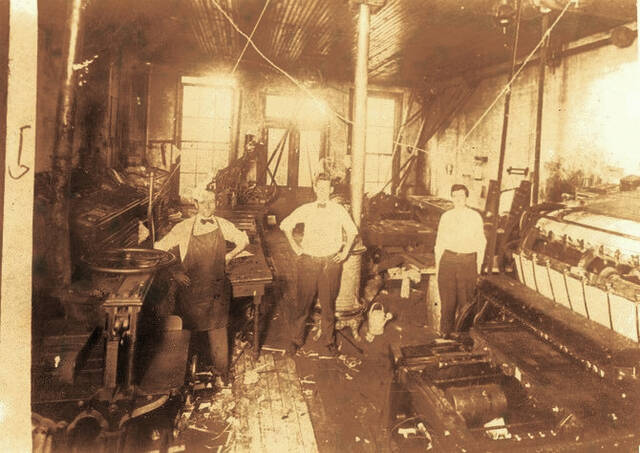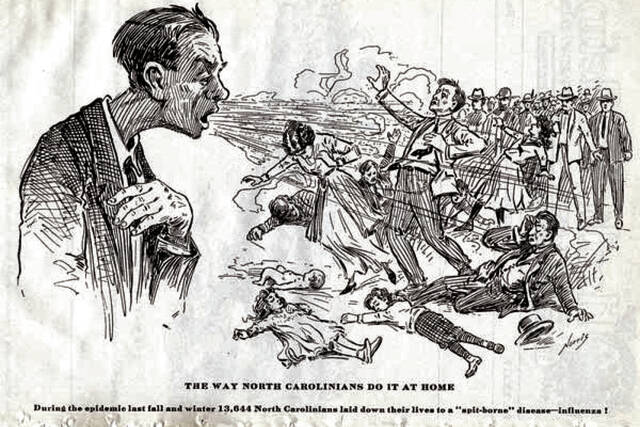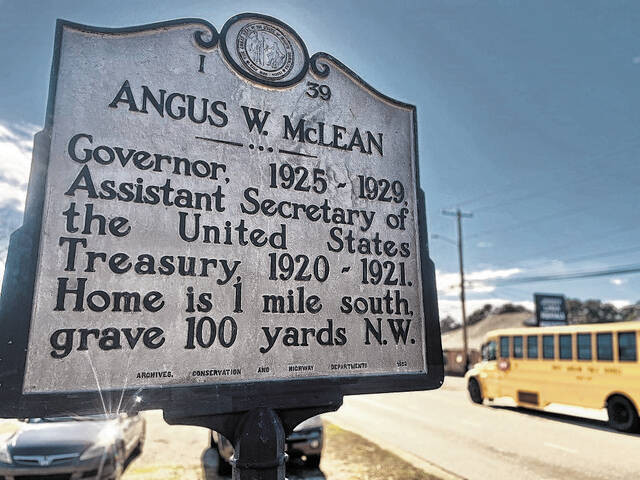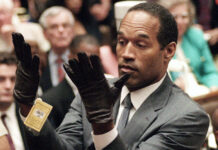
Since it’s earliest history, the printing press helps document local history found nowere else.
Courtesy Robeson County History Museum
LUMBERTON — According to a report in a 1906 edition of The Robesonian, the Daughters of the Confederacy raised $1,300 toward the purchase of the Courthouse statue during a celebration honoring Gen. Robert E. Lee’s 99th birthday.
This news item was reprinted in The Robesonian’s 132-page Millennium Edition, published on December 29, 1999. When the statue of the Confederate soldier was dedicated in 1907, The Robesonian called it the “most notable” day in county history.
Debate about the statue aside, the special edition illustrates an important point regarding communities and their history. A newspaper like The Robesonian publishes day-to- day history of a community and is a lasting source of information.
If a newspaper dies, an ongoing source of community history dies with it. If it’s not reported, shared and conserved, it will be lost.
Here are a few things gathered from the first 50 years of the 20th century as reported in the special edition:
In 1904, Robeson County led the state with 300 smallpox cases. July 4th celebrations were cancelled due to the outbreak.
In 1910, Lumberton got its second railroad line, the Virginia and Southern. Angus Wilton McLean, an attorney, banker and future governor of North Carolina, was secretary.
In 1911, 271 children were tested for hookworm, an intestinal parasite. A total of 117 tested positive.
In 1912, Elm Street was paved. Approximately 1,000 Robesonians day-tripped by train to the beach.
In 1914, it was announced that malaria was “almost” eradicated from the county. Cotton prices, Robeson’s money crop before tobacco, were selling at a loss.
In 1916, the population of the county was 52,000.
In 1918, the Spanish flu epidemic struck Robeson. Schools, churches and cotton mills closed. Twelve persons died in one week.
In 1921, The Robesonian reported there were 40 men on the county chain gang.
In 1922, the first woman was elected to the Lumberton School Board. There were 2,200 entries in the Robeson County Fair.
In 1923, Dr. Durham, the minister of the First Baptist Church in Lumberton, denounced the Ku Klux Klan in a sermon.
In 1925, North Carolina Gov. Angus Wilton McLean was inaugurated. The Robesonian reported that U.S. engineers travelled the length of the Lumber River to see if it could be straightened.
In 1926, two mules turned the tables on an automobile chasing it down the road. Also, a newspaper boy, who was discovered to be a girl, was fired and sent home. In other news, Frank Lindsey’s dog treed a racoon. He cut the tree down which fell on him and is dog, killing both. Lumberton’s official thermometer broke when July temperatures reached 108.
In 1928, the Carolina Theatre opened. At a cost of $150,000, it was declared by The Robesonian “one of the handsomest in the state.”
In 1929, the Bank of Rowland failed as the Great Depression started to impact the local economy. Gov. McLean urged farmers to diversify from reliance on cotton. And, Dick Norment, who had lost an arm and a leg, pitched Lumberton High School to a baseball win over Clarkton.
In 1931, Lumberton got its first Girl Scout troop. One thousand people were out of work, and the Planters Bank closed its doors.
In 1933, 500 men applied on the first day for 131 positions with the federal Civilian Conservation Corps.
In 1935, Lumberton got its first traffic light at Elm and 2nd Streets. Wages for unskilled labor fell from 30 cents to 15 cents an hour.
In 1936, the County Commissioners purchased a submachine gun for the sheriff.
In 1938, Democrats swept Robeson County elections by a 12-1 margin. The Works Progress Administration (WPA) built a pavilion for roller skating and recreation at McMillan’s Beach near Lumberton at a cost of $20,000.
In 1940, The Rural Electrification Administration gave Lumbee River Electric Membership Cooperative a $428,000 loan to build 450 miles of lines. It was reported locally as the “biggest loan in the South.”
Also in 1940, the Lumberton Armory (now the Bill Sapp Recreation Center) was dedicated. A WPA project, it cost $104,000. The first Robeson volunteers went to war.
In 1941, Daylight Savings Time became official. Robeson’s last Confederate soldier died. William Barnes fought at Gettysburg. Katie Lee Regan of Howellsville was the first woman to sit on a Robeson County jury.
In 1945, Victory in Europe did not stop the draft as the war in Asia continued. A total of 158 Robesonians died in World War II, and 155 North Carolina prisoners of war were liberated (Including Ray Revels of Lumberton). Rationing for some commodities ended.
In 1946, Robeson ranked lowest in the state for book purchases. Robeson County Public Library had 8,000 books for 78,000 county residents. The Federal Communications Commission (FCC) granted Robeson’s first radio license, a 250-watt AM station at 1340 on the dial with call letters WTSB. Two new “negro” schools were constructed as a movement for “equal” schools began.
In 1947, the Lumberton town council heard complaints that 450 parking meters were too many.
In 1948, Robesonians voted by a margin of five to one against a referendum for beer and wine sales.
In 1949, the Lumberton Auctioneers, a semi-pro baseball team, played on the Armory field.
In 1951, Indians of Robeson County petitioned the state to change the tribe’s name to Lumbee from Cherokee Indians of Robeson County. Pembroke State College leaders asked that its graduates be able to attend UNC graduate schools.
In 1952, 15 suspected KKK members were arrested as Robeson attempted to rid the county of the terrorist organization. Also, Carolina Power and Light’s largest electric generating plant began service outside Lumberton.
There are another 48 years of good reading in the Millennium Edition as the county lurched into the future.
The Millennium Edition was gathering dust alongside the 1951 history edition that was edited by the History Museum’s founder, Helen Sharpe. Mrs. Sharpe believed in the importance of community journalism and how it becomes community history.
The Robeson County History Museum is custodian of one copy of the Millennium Edition. It may be viewed during Museum hours, 10 a.m. to noon on Tuesdays and Thursdays and 2-4 p.m. on Sundays.
Reach










